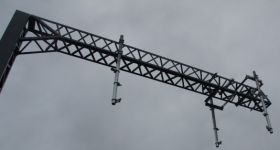Official: Highway Users Pay Only 40% of Infrastructure Costs
Users of the State Highway network are paying only 40% of the full costs of providing roading infrastructure. Not that it should surprise us, that’s the shock admission in a major report commissioned by the Transport Agency and undertaken by Rockpoint Corporate Finance.
The report shows that users of the State Highway network are effectively subsidised to the tune of $1.5 billion per year.
Executive Director of the NZ Shipping Federation, Sam Buckle: “There has been a lot of talk about the cost to the taxpayer of the rail network, its subsidies and the need for it to operate on a commercial basis. These are important issues that impact on coastal shipping and which the government is currently grappling with.
“However, the chronic under-pricing of roads is the elephant in the room.”
He says the revelation in the report means there’s an artificial cut in the price of moving freight by road, creates a competitive advantage for trucks, contributes to congestion and emissions and denies taxpayer billions of dollars in much-needed revenue.
The Rockpoint Corporate Finance report, entitled Coastal Shipping and Modal Freight Choice, was commissioned by NZTA and the Government to assess the prospects of coastal shipping increasing its share of the freight market in competition with road and rail.
The report emphasises the need for changes to the regulatory regime for coastal shipping, transport externalities and the need for greater certainty about future rail investment. However, its most significant findings are about the different ways we manage transport infrastructure in New Zealand.
Mr Buckle says: “The Government has said it does not want subsidies in the transport sector. It has said it wants the transport sector to operate commercially and for modal choice to be determined by the market. It has also said it wants to extract better returns from state owned assets. Well, it is time to seriously debate the way we manage and price road use – because the current model doesn’t meet any of these expectations. ”
According to the report, Government and Territorial Authorities do not attempt to generate a full economic return on the value of the road network.
The report also states that rail is a recipient of significant financial support for network and operational requirements and also fails to generate a commercial return on infrastructure. In contrast, coastal shipping targets a commercial return on its operations (inclusive of capital costs) and is required to meet commercially established port charges. These represent approximately 50% of total operating costs, as compared to current infrastructure charges for road at 14% and rail at 9%, says the report.
Based on The Treasury’s valuation of the State Highway network at more than $20 billion, Rockpoint has calculated that if operated on a commercial model, the network should be generating approximately $2.5 billion in revenue per annum. Instead, it only generates approximately $1 billion. This leaves a shortfall and effective subsidy of $1.5 billion per year.
On a purely commercial basis, the assumed revenue receipts from all sources would need to more than double to achieve indicated commercial returns inclusive of a return on capital in respect to State Highways, according to Rockpoint. Rockpoint’s calculations did not include the local road network, which constitutes 88 per cent of New Zealand’s total roading network and has previously been valued at $25 billion (Surface Transport Costs and Charges report, 2002).
Neither did their calculations include externality costs, which Rockpoint notes are 12 times higher for roading than for coastal shipping. You can read the report here
Thanks to reader Steve W who spotted it.











3 Comments
Perhaps an idea would be to require all road freight trucks to have location sensors, and pay properly for their use of intercity roads and highways.
The Minister for the Road Transport Forum isn’t likely to think this is a good idea, I’m sure.
It would be interesting to read the “replies” of Luke Allpass, Liberty Scott and Tony Friedlander. No doubt they would find some other “convenient” research to suit their needs.
I don’t know whether that’s a particularly helpful report in terms of promoting alternative transport options. It says that rail only covers about 8% of its costs.